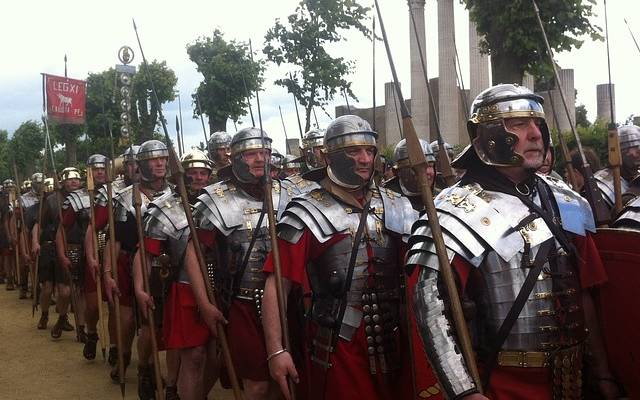Israeli archaeologists recently exposed the only Roman military camp of its kind uncovered in the eastern half of the Roman Empire, dating back to the reign of Emperor Hadrian.
An Israeli team of archaeologists recently uncovered unique findings of a Roman Legion camp right near the famous Tel Megiddo in northern Israel.
The origins of the camp go back to the reign of Roman emperor Hadrian (117-138 C.E.), during which two imperial legions were stationed in the province of Judea: Legio X Fretensis in Jerusalem and Legio VI Ferrata in the north. The latter was deployed between the First Jewish Revolt (67-70 C.E.) and the Bar-Kokhba rebellion (132-136 CE), and it remained stationed in Judea through most of the third century.
Based in the Jezreel Valley near Tel Megiddo, the Legio VI Ferrata, or the Sixth Ironclad Legion, was situated where it could control imperial roads, with direct access to the Galilee and inland valleys of northern Israel – important centers of the local Jewish population. Until recently, the exact location of the military camp of the Sixth Legion had not been confirmed, but textual evidence placed it in the Jezreel Valley along the road from Caesarea to Beit She’an in the vicinity of Megiddo.
As part of his Ph.D. research at Tel Aviv University, prominent archaeologist Yotam Tepper identified remnants from the Roman occupation of the area, including coins and roof tiles stamped with the name of the Sixth Legion, concentrated in and around a large agricultural field near Tel Megiddo.
Aerial photographs and satellite imagery indicate the presence of a large rectangular structure just beneath the surface, surrounded by depressions, leading Tepper to identify the field as the most likely location of the Sixth Legion’s headquarters. On the basis of this preparatory work, Tepper joined up in the summer of 2013 with the Jezreel Valley Regional Project and began excavating the long-lost camp of Legio VI Ferrata.
The team uncovered defensive trenching earthworks next to the foundations of a great wall about six meters (20 feet) wide. Inside the wall, the team exposed rooms likely belonging to one of the barrack areas of the camp, containing numerous ceramic roof tiles with the legion’s mark, coins, fragments of scale armor and more. They also located what was probably the camp’s Via Principalis, or Main Street.
These recent excavations uncovered remains of the streets running through the imperial camp as well as water pipes and sewer channels. Findings also included a large building, possibly the residence of the commander of the fortress. The camp, roughly 300 meters by 500 meters (984 feet by 1,640 feet), housed about 5,000 Roman soldiers.
As the only Roman military camp of its kind uncovered in the eastern half of the Roman Empire, the recent discoveries contribute to a better understanding of Roman military architecture and engineering.
By: United with Israel Staff

Free Ebook: 10 Best Places to Visit in Israel
The Land of Israel has provided the backdrop for some of the most important events in human history. From the Old City in Jerusalem to the Sea of Galilee, people from all over the globe visit the Holy Land each year to take in the breathtaking scenery and inspiration of Israel. Now you can experience this beauty for yourself from the comforts of home and maybe plan a trip of your own to Israel. Get the free, exclusive eBook from United with Israel: The 10 Best Places to Visit in Israel.
